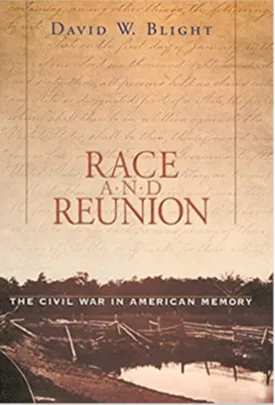Race and Reunion: The Civil War in American Memory by David Blight
David Blight’s Race and Reunion: The Civil War in American Memory masterfully delves into the history of civil war memory, exploring how Americans began to reconcile post-war animosities after the south’s defeat in 1865. Blight examines our understanding of the civil war from various perspectives, from African Americans to Confederates, and all in between. Drawing from a variety of primary sources, Blight proposes a framework for understanding the evolution of Civil War memory, from the time immediately after the war’s conclusion to the modern day.
When the South finally succumbed to long odds during the Civil War, a period of profound change and reconciliation followed. As the victors ponder their triumph, the vanquished grapple with their defeat. It is during this period of reflection and contemplation that David Blight’s Race and Reunion: The Civil War in American Memory analyses the history of how both sides developed a shared understanding of what had occurred.
The book is divided into four sections. The first section delves into the mythology of the war. Blight examines literature and popular culture to reveal how Americans used the war to reflect regional identities, manifest personal ideologies and shape their understanding of history. The second section focuses on a crucial period of reconciliation that took place during Reconstruction, a period that essentially redefined the South and the country as a whole.
Blights’s third section investigates how memorials, the Lost Cause movement, and the Commemoration combined to create an atmosphere of false reconciliation. This false reconciliation was seen most prominently in celebrations for the fiftieth anniversary of the Civil War, which glorified Confederate war heroes and sought to erase slavery from official narrative.
The fourth section of Race and Reunion looks outward to the Second Reconstruction period in the 1960s. This period sought to fundamentally change the lives of African Americans and finally reconcile the nation’s historical record to accurately reflect the complexity of the civil war.
David Blight’s Race and Reunion offers a comprehensive view of how Americans reconciled the civil war. He draws upon a vast array of primary sources to discuss the progress that was made during Reconstruction, the false reconciliation of the Lost Cause, and the true reconciliation made during the Second Reconstruction. His findings are presented in a clear, concise manner and provide an important look at the role race, sentiment, and commemoration have in the process of coming to terms with one of the darkest eras of America’s history. His careful analysis offers an invaluable glimpse into the hearts and minds of all Americans affected by the War’s tumultuous consequences.

